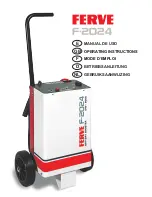
INTRODUCTION
PRELIMINAR STUDIES AND CONSIDERATIONS
MAINTENANCE AND DAMAGE PREVENTION
WORK ON BASIC VEHICLE
MOUNTING AND CONSTRUCTION
POWER TAKE-OFF
ELECTRIC AND ELECTRONIC SYSTEMS
APPENDIX
128
Body Builder Manual Part II, Specific Book LCV
V1.0, February 2015
4.12.4 Mud guards
According to rules, the vehicle chassis and body must be designed in such a way that
the spray from the wheels can be avoided as far as possible, or otherwise, the ve
-
hicles must be equipped with an adequate protection for this purpose.
The type and position of the mud guards depend on the vehicle model and the size
of wheel that is mounted.
If the vehicle is supplied without mud guards, the Body Builder must install them us
-
ing a similar method to the method that HMC normally uses. In general, the chassis
is equipped with standard holes for the installation of the mud guards, that allow
them to be installed in different positions.
The following points must be considered:
- The top of the wheels must be completely covered by the mud guards.
- The movements and vibrations of the suspension must be taken into account.
The wheel must have a normal movement, even with the suspension working at
maximum capacity.
- The support structure of the mud guards must be appropriate and adapted to
the geometry of the chassis and bodywork, as well as to the dimensions of the
wheels. It must be sturdy enough to withstand the demands of the terrain.
- The mud guards must be wider than the maximum space occupied by the tyre.
Attention must be paid not to exceed the permissible main vehicle dimensions.
See chapter 2.3.2 "Vehicle main dimensions".
NOTICE
The guidelines prescribed in the European normative Directive
91/226/EEC and Directive 2010/19/EU, should be followed, as should the legisla
-
tion of each country.
















































